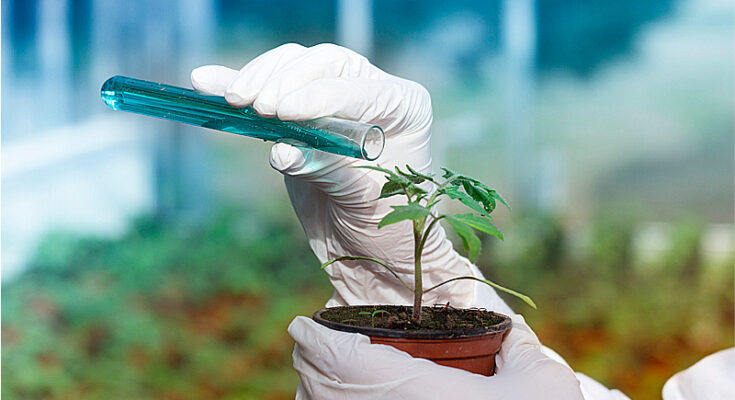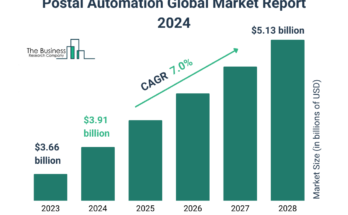Crop Biological Protection Market refers to the industry involved in the development, production, and distribution of biological products that protect crops from pests, diseases, and weeds. These biological solutions utilize living organisms such as beneficial insects, microorganisms, and natural compounds to enhance crop health and productivity while minimizing environmental impacts.
Crop biological protection has gained significant attention in recent years due to increasing concerns about the adverse effects of synthetic chemical pesticides on human health and the environment. Biological products offer an alternative approach that is more sustainable and eco-friendlier. They work by harnessing the natural defense mechanisms of plants or by introducing beneficial organisms that control pests and diseases.
The market for crop biological protection encompasses a wide range of products, including biopesticides, bio fungicides, bioinsecticides, and bio stimulants. Biopesticides are derived from natural sources such as plants, animals, and microorganisms, and they act as direct control agents against pests and diseases. Bio fungicides target fungal pathogens, while bioinsecticides focus on insect pests. Bio stimulants, on the other hand, promote plant growth and improve nutrient uptake.
Factors driving the growth of the crop biological protection market include increasing demand for organic and sustainable food, stringent regulations on chemical pesticide usage, and growing awareness among farmers about the benefits of biological solutions. Additionally, advancements in biotechnology and microbial research have led to the development of more effective and targeted biological products.
Limited Efficacy: One of the primary challenges is the limited efficacy of crop biological protection products compared to conventional chemical pesticides. While biological agents offer environmentally friendly alternatives, their effectiveness in controlling pests, diseases, and weeds may not match the immediate and broad-spectrum control provided by chemical pesticides. Improving the efficacy of biological products is crucial to gain wider adoption.
High Costs: Biological crop protection products often have higher production costs compared to synthetic pesticides. This can make them less affordable for some farmers, particularly those in developing countries or with small-scale operations. The cost-effectiveness of biological solutions needs to be improved to make them more accessible and competitive in the market.
Lack of Awareness and Knowledge: Many farmers are still not fully aware of the benefits and potential applications of biological crop protection products. Limited knowledge and understanding about their proper use, efficacy, and integration into existing pest management practices can hinder adoption. Increasing awareness and providing education and training programs to farmers and agronomists is essential to overcome this challenge.
Limited Product Range: The range of available biological products is relatively limited compared to chemical pesticides. This can restrict the options for farmers who require specific solutions for their crop and pest problems. Expanding the product range and addressing the specific needs of different crops and regions would be crucial to increase the adoption of biological protection in agriculture.
Regulatory Hurdles: Biological crop protection products often face complex and lengthy regulatory processes, which can significantly delay their market entry. These regulations are necessary to ensure product safety and efficacy, but they can pose a challenge for manufacturers, causing increased costs and prolonged time to market. Streamlining and harmonizing regulatory processes across different regions can facilitate the commercialization of biological products.
Infrastructure and Distribution Challenges: Developing a robust supply chain and distribution network for biological products can be challenging, particularly in rural areas and developing regions. The need for appropriate storage, handling, and transportation conditions to maintain the viability and efficacy of biological agents adds complexity to the distribution process. Building adequate infrastructure and establishing efficient distribution channels is crucial for the success of biological crop protection products.
Click Here, To Get Free Sample Report: https://stringentdatalytics.com/sample-request/crop-biological-protection-market/4373/
Market Segmentations:
Global Crop Biological Protection Market: By Company
• Bayer Crop Science
• Valent BioSciences
• Certis USA
• Koppert
• Syngenta
• BASF
• Corteva Agriscience
• Andermatt Biocontrol
• FMC Corporation
• Marrone Bio
• Isagro
• Som Phytopharma India
• Novozymes
• Bionema
• Jiangsu Luye
• Chengdu New Sun
• SEIPASA
• Coromandel
• Jiangxi Xinlong Biological
Global Crop Biological Protection Market: By Type
• Microbial Pesticides
• Biochemical Pesticides
• Plant-Incorporated Protectants (PIPs)
• Others
Global Crop Biological Protection Market: By Application
• Fruits and Vegetables
• Cereals and Pulses
• Other Crops
Global Crop Biological Protection Market: Regional Analysis
All the regional segmentation has been studied based on recent and future trends, and the market is forecasted throughout the prediction period. The countries covered in the regional analysis of the Global Crop Biological Protection market report are U.S., Canada, and Mexico in North America, Germany, France, U.K., Russia, Italy, Spain, Turkey, Netherlands, Switzerland, Belgium, and Rest of Europe in Europe, Singapore, Malaysia, Australia, Thailand, Indonesia, Philippines, China, Japan, India, South Korea, Rest of Asia-Pacific (APAC) in the Asia-Pacific (APAC), Saudi Arabia, U.A.E, South Africa, Egypt, Israel, Rest of Middle East and Africa (MEA) as a part of Middle East and Africa (MEA), and Argentina, Brazil, and Rest of South America as part of South America.
Visit Report Page for More Details: https://stringentdatalytics.com/reports/crop-biological-protection-market/4373/
More Report: https://sdnewswire.com/poultry-farm-management-software-market/
Objectives of Crop Biological Protection Market Study:
- Market Size and Growth Analysis: Determine the current market size of the crop biological protection industry and analyze its historical growth trends. This objective involves assessing the market’s revenue, sales volume, and market share. Understanding the market size and growth helps identify the industry’s potential and attractiveness.
- Competitive Landscape Analysis: Analyze the competitive landscape of the crop biological protection market by identifying key players, their market shares, and strategies. This objective involves studying the market’s competitive intensity, key market players’ strengths and weaknesses, and their product portfolios. Understanding the competitive landscape helps identify market gaps and potential areas for differentiation.
- Market Trends and Drivers: Identify and analyze the key market trends, drivers, and challenges influencing the growth of the crop biological protection market. This objective involves studying factors such as regulatory frameworks, technological advancements, consumer preferences, and environmental concerns. Understanding market trends and drivers helps assess future market opportunities and risks.
- Customer Insights: Understand the needs, preferences, and purchasing behavior of customers in the crop biological protection market. This objective involves conducting surveys, interviews, or analyzing existing data to gather insights into customer preferences, awareness levels, and decision-making processes. Customer insights help in developing targeted marketing strategies and product development plans.
- Market Opportunities and Forecast: Identify potential market opportunities and forecast the future growth and revenue potential of the crop biological protection industry. This objective involves analyzing market trends, competitive dynamics, and customer insights to project the market’s future performance. Market forecasts assist stakeholders in making informed business decisions and resource allocation.
- Regulatory and Environmental Factors: Assess the regulatory frameworks and environmental considerations affecting the crop biological protection market. This objective involves analyzing policies, regulations, and standards related to crop protection products, organic farming practices, and environmental sustainability. Understanding these factors helps stakeholders navigate the legal and environmental landscape and align their strategies accordingly.
About US:
Stringent Datalytics offers both custom and syndicated market research reports. Custom market research reports are tailored to a specific client’s needs and requirements. These reports provide unique insights into a particular industry or market segment and can help businesses make informed decisions about their strategies and operations.
Syndicated market research reports, on the other hand, are pre-existing reports that are available for purchase by multiple clients. These reports are often produced on a regular basis, such as annually or quarterly, and cover a broad range of industries and market segments. Syndicated reports provide clients with insights into industry trends, market sizes, and competitive landscapes. By offering both custom and syndicated reports, Stringent Datalytics can provide clients with a range of market research solutions that can be customized to their specific needs.
Contact US:
Stringent Datalytics
Contact No – +1 346 666 6655
Email Id – [email protected]




